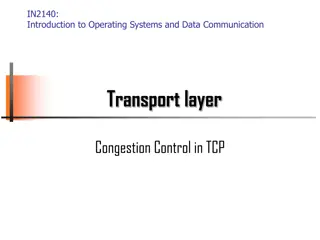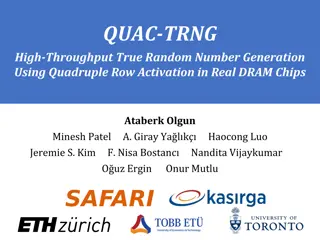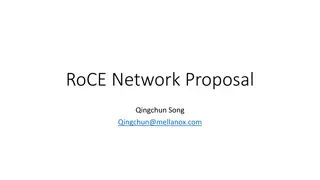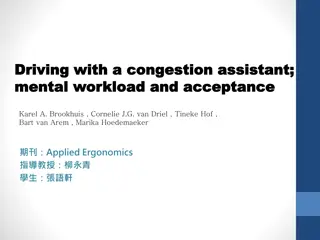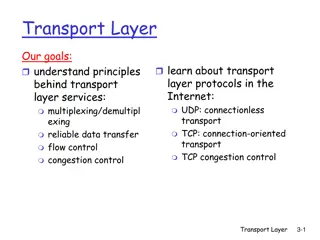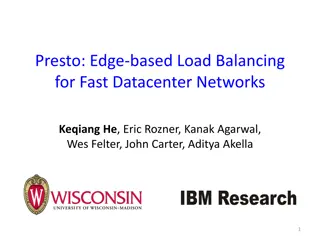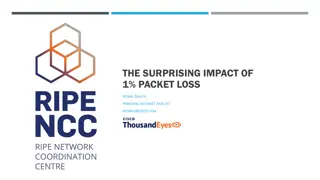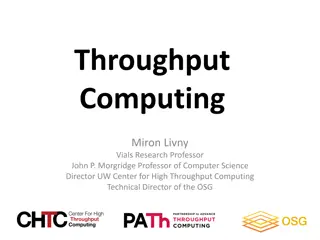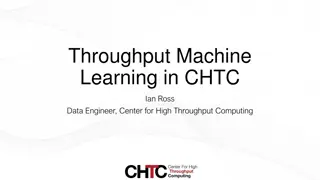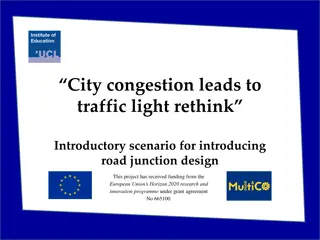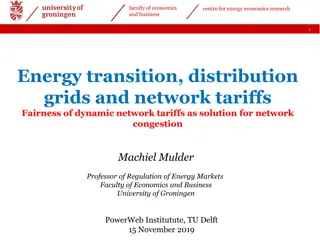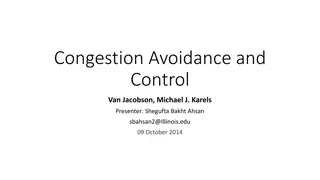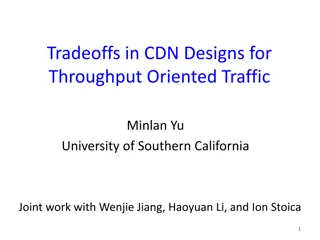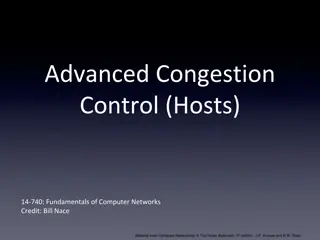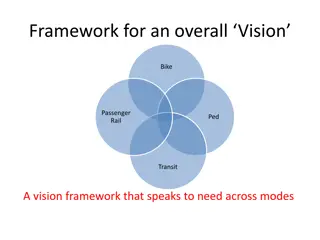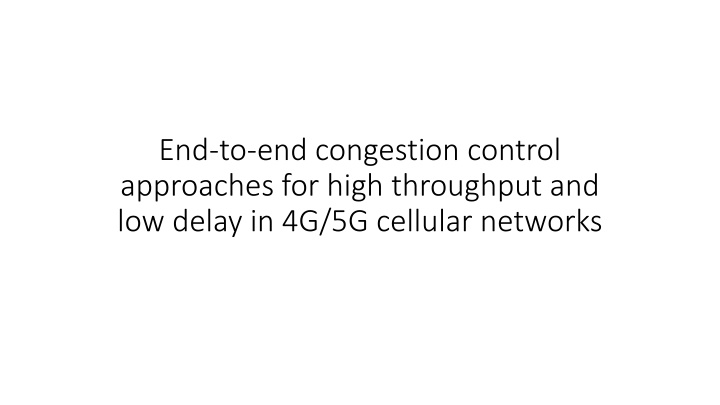
End-to-End Congestion Control Approaches for High Throughput and Low Delay in 4G/5G Networks
Explore end-to-end congestion control strategies for achieving high throughput and low delay in 4G/5G cellular networks. Learn about common congestion control algorithms, the impact of 4G/5G technologies on congestion control, and related work in the field.
Download Presentation

Please find below an Image/Link to download the presentation.
The content on the website is provided AS IS for your information and personal use only. It may not be sold, licensed, or shared on other websites without obtaining consent from the author. If you encounter any issues during the download, it is possible that the publisher has removed the file from their server.
You are allowed to download the files provided on this website for personal or commercial use, subject to the condition that they are used lawfully. All files are the property of their respective owners.
The content on the website is provided AS IS for your information and personal use only. It may not be sold, licensed, or shared on other websites without obtaining consent from the author.
E N D
Presentation Transcript
End-to-end congestion control approaches for high throughput and low delay in 4G/5G cellular networks
Introduction 5G Cellular Networks Enhanced Mobile Broadband (eMBB) 3D and Ultra High Definition (UHD) videos Cloud Gaming Augmented Reality Ultra Reliable and Low Latency Communications (URLLC) Self-driving Cars Industrial Automation Massive Machine-type Communications (mMTC) Sensor Networks Smart City Home Applications
Introduction Common congestion control algorithms (CCAs) Packet loss as a congestion signal Queuing delay (bufferbloat) New cellular CCAs are developed under two main assumption: Content moving closer to the cellular access link reduce the cost of transferring across expensive long-haul links (WANs) make the radio link become the bottleneck Reduced cross-traffic effect due to per-user queues Place different users flows in separate queues
The potential impact of 4G/5G technologies and use cases on congestion control Link adaptation An evolved Node B (eNodeB) selects the modulation and coding scheme to be used in the communication based on the reported signal quality mmWave Higher data rates High propagation loss Easily affected by blocking entities Small cells Increase capacity Increase the scale and number of load variations Increase the handovers and state reconfigurations frequency
The potential impact of 4G/5G technologies and use cases on congestion control MIMO (Multiple Input Multiple Output) Enable multiple antenna transmissions Higher data rates and/or better transmission reliability Carrier aggregation Use multiple carriers simultaneously to obtain a larger bandwidth for transmission Primary component carrier (PCC) - only changed during handovers Secondary component carriers (SCC)
The potential impact of 4G/5G technologies and use cases on congestion control Dual connectivity (DC) Connect to two access networks at the same time Higher peak data rate High fluctuations in data rate Dynamic network slicing and resource allocation Network slicing - divide the physical network infrastructure into multiple separate logical network entities Dynamic resource allocation Converged heterogeneous services Could add extra delay
Conventional end-to-end congestion control in current cellular networks End-to-end congestion control in the Internet In transport layer TCP, QUIC, SCTP Outside transport layer - Real time media streaming (on UDP) Loss or delay for detecting congestion Additive increase multiplicative degrease (AIMD) Slow-start Start from an initial value and double the congestion window (CWND) every round-trip time (RTT) until its threshold (ssthresh) is reached or a packet loss is experienced Congestion avoidance TCP NewReno : sets the ssthresh to half the latest CWND and update the CWND to the ssthresh value TCP CUBIC : records the current CWND as the maximum window size(Wmax), then decreases its CWND to a value determined by a multiplicative decrease factor
Conventional end-to-end congestion control in current cellular networks Congestion control issues and in-network solutions in cellular networks Network access layer issues and solutions Non-congestion packet loss Radio link control (RLC) and medium access control (MAC) Hide the random packet losses from the data sender Internet layer issues and solutions The large buffers delay the detection of congestion at the end nodes Active queue management (AQM) Multi-layer solutions Performance enhancing proxies (PEPs)
Challenges in designing new end-to-end CCAs for cellular networks Avoiding underutilization in an environment with high bandwidth variability. Achieving full utilization without creating large queueing delays in the large buffers provided to improve the utilization of the highly variable capacity by popular loss-based CCAs. Being able to differentiate between delay variations caused by traffic competition and delay variations caused by radio channel events, e.g., interference, multi-path fading, etc.
Challenges in designing new end-to-end CCAs for cellular networks Tracking the highly variable bandwidth probing Avoiding large queueing delay Large buffers Insensitivity to non-queuing delay variability Wrong congestion decision
Classification of CCAs for cellular access Reactive algorithms Predictive algorithms Network-assisted algorithms
Deployment factors Downlink/uplink asymmetry Specificity of design Required modifications TCP friendliness Performance tradeoff Cross-layer dependency
Opportunities and outstanding issues Integration and interaction with SDN/NFV Leveraging edge/fog computing and ICN High utilization as the peak rate and variability increases Improving fairness between flows Applying multi-domain congestion control Minimizing flow interactions Evaluating CCAs through independent testing and benchmarking
Summary and conclusions Focus on transport-layer, end-to-end algorithms Three broad groups of CCAs Future works



